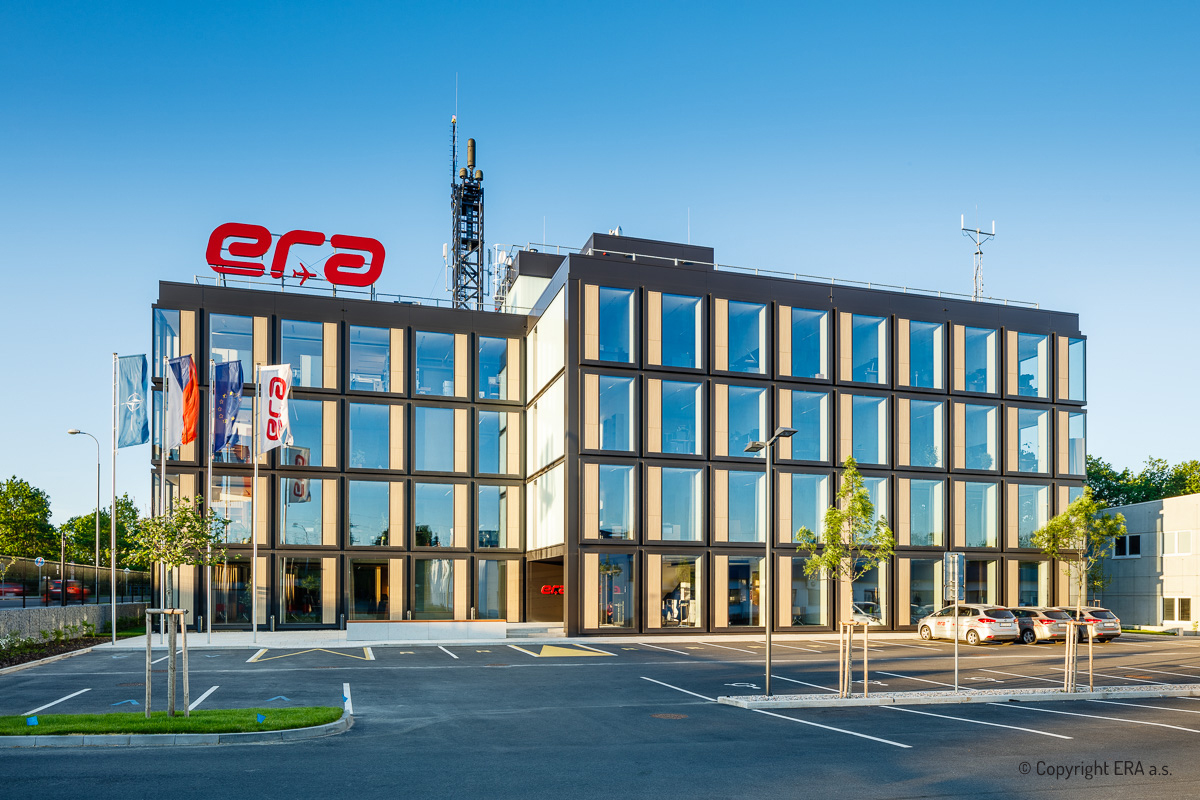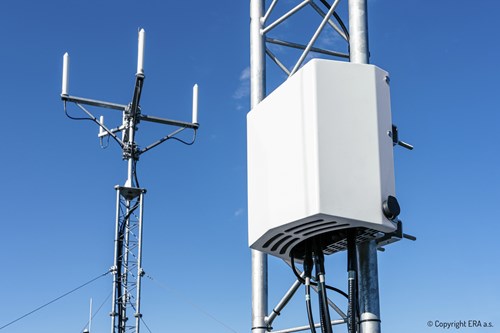ERA celebrates its 30th birthday - 30 years since the company´s foundation

It all started with The Three Musketeers. Three enterprising engineers who could not bear the thought that the original and unique technology of passive radar would cease to be developed in the Czech lands. Their legacy has now been developed for 30 years by 400 employees in ERA, a company manufacturing products, which are part of the Czech family silver. Passive radiolocation has survived and is conquering the world: systems from the city of Pardubice, Czech Republic, operate in ATC/ATM field at 160 locations in 70 countries on 5 continents. ERA's share of the world market exceeds fifty percent."

Going back in time
It is the mid-1990s, Pardubice, CR. State-owned enterprise Tesla, one of the largest electrical engineering companies in the country, has gone bankrupt in a wild privatization. Its former employees pick up the flag of radar technology development and production and continue working in several successor private companies. However, the most interesting know-how – the knowledge of passive surveillance systems – was transferred to ERA by its founding fathers. Miroslav Sotona of Eldis, Milan Bernard of Retia and the now-deceased techno-visionary Vladimír Kubeček of Alsin joined forces and founded a completely new company, which they named with an acronym consisting of the initial letters of the three companies E-R-A. Since everybody knows there were more than three Musketeers, many civilian and military professionals began their work to rescue and develop the underappreciated technology.
The technology of passive radiolocation, in today's European professional terminology called multilateration, was developed in former Czechoslovakia based on the research by Associate Professor Vlastimil Pech and his colleagues at the Military Research Institute in Brno. The actual systems, which include Kopáč, Ramona and the legendary Tamara, were produced in Pardubice by Tesla and first used by the Czechoslovak Army. The newly founded company came up with the 4th and 5th generations of the Vera system, now sold worldwide as VERA-NG. However, this girl’s name – unlike Ramona and Tamara, both abbreviations – was inspired by a real-life figure. The godmother of Vera, after whom the system was named, was Colonel Věra Perlingerová, a military air traffic controller who, with a handful of colleagues, pressed the use of passive tracking systems in practice by persistent lobbying.
However, the term passive radar is slightly misleading – passive trackers are not radars in the classical sense of the word because they do not transmit anything. On the contrary, they are silent, they do not send any signals into the ether and are thus invisible from the radiotechnical point of view. Thanks to Czechoslovak scientists and engineers, the Eastern Bloc acquired a unique technology for tracking the movement of aircraft in the sky and determining their type, which was unavailable in the West. However, when the regime changed and the Cold War ended, there was no interest in passive radars in the pacifist euphoria of so called “the end of history”. Thus, the newly formed company faced the challenge of convincing the business community in the West that a small post-communist country had invented something they did not have. And that it could be put to great use – both for national defence and for civil air traffic control.
Small, powerful, cost-effective system assisting ATM
Passive or else multilateration systems calculate the position of targets based on a mathematical calculation of the different arrival of signals in the network in the space of deployed stations (so called TDOA principle – Time Difference of Arrival). They do not need to transmit a beam and receive its reflection back like radar. This means that while the system needs more stations, those can be much smaller, maintenance-free, powered by wind or the sun, and located in seclude, remote and difficult-to-reach locations. There is no need for painting, lubrication, or cooling, they can fit anywhere when installed, and the transport is easy. And when you need to see farther, higher or cover more territory, see around the corner of an airport terminal or in a deep valley, no problem - just add more stations to net. That means the cost-performance value ratio is great. Are you interested? Yes! All it took was one little thing – convincing customers that it works. And eventually that was achieved.
Air safety is improving. Also thanks to ERA
Nowadays, multilateration systems are part of the technological equipment for ensuring safety at 70 airports worldwide, including 20 of the 50 largest airports in terms of passenger numbers. The systems determine the identification, position and trajectory of aircraft or vehicles, thus preventing collisions both in the air and on the ground, and they increase airport throughput, enabling more frequent departures and arrivals. They are also able to track the path of aircraft between destinations and, by pinpointing the position of the plane, more aircraft can fit above each other in the various levels of the flight corridors – which in turn alleviates airspace congestion.
ERA systems track half of all flights that take place around the world every day. Thanks to them, passengers' journeys around the world are safer and more flexible; their movement can be monitored during their stay on board, both on the ground and in the air, literally from gate to gate. No wonder that air travel is gaining popularity; due to modern technologies such as multilateration it is now unequivocally the safest mode of transport.
Passive systems provide air defence with eyes
Military versions of passive surveillance systems are deployed in many NATO and allied militaries. They serve as early warning systems for border protection, in addition to maintaining good neighbourly relations. Those who are ready are not caught unawares. However, the neighbouring countries do not need know that they are not trusted and someone keeps an eye on what's flying where. Surveillance has the added advantage of filling national databases of targets with fingerprints of all kinds of vehicles (aircraft, as well as ships or ground based radars), which are accurately recorded, so that the next time they are detected, the operators know immediately who is who, down to the level of the exact type of equipment used.
At the same time, the observed/possible future enemy has no inkling about the presence and operation of the passive system. The system sees everything while being invisible. Unlike conventional radar, which shines its signal into space like a light bulb, and during attack, it is very high on the list of targets to be destroyed because that would blind the enemy, the passive system survives and provides the air defence with an extra pair of eyes. It literally “sees without being seen”!
For all those reasons, passive systems are gradually being introduced as an additional level in airspace surveillance in the area of interest, a surveillance asset in air defence systems and also, as an invaluable assistant in Electronic Warfare, providing intelligence
Sixty-three years have passed and passive radar technology has not only survived all the political and economic upheavals, but has proven to be unique and irreplaceable in modern times. It is no exaggeration to say that currently we are experiencing a great renaissance of passive surveillance systems, and that they have a promising future ahead of them. And so does their manufacturer – the thirty-year-old company ERA.












.png)
.jpg)
Comments
There are no comments yet for this item
Join the discussion